Build Design Systems With Penpot Components
Penpot's new component system for building scalable design systems, emphasizing designer-developer collaboration.

UX Planet — Medium | Guy Ligertwood
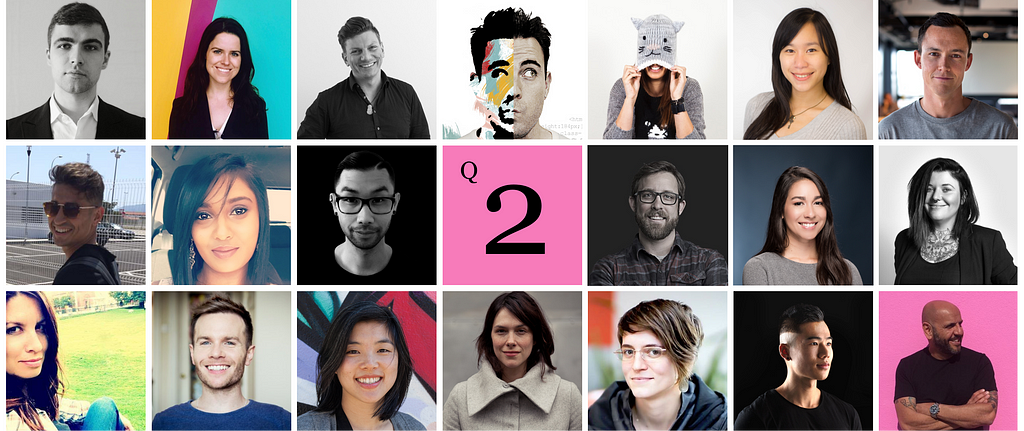
Learn From Twenty Experienced Designers
Intro Article: Get to know the designers
Question 1: How did you get into design?
Question 2: How your typical work day? (You’re here)
This week find out how these twenty great designers make the most out of their workday and get tips on improving yours. You’ll be surprised what you’ learn.

Australian 🇦🇺
I’m quite fortunate to have a 40-minute commute to work. I spend this time listening to music or reading a topic relevant to my life or work. For example, right now I’m teaching myself about Machine Learning.
My day in the office is different depending on the mode of the team. In execution mode, I’m in the details, designing features, creating specs, overseeing builds.
I adapt to keep the team moving forward. In planning mode, I work on defining and bringing to life vision and strategy — partnering with my product manager and engineers to sequence and prioritise effectively.
Everything in between is coordinating with other teams or staying connected to the user.
I stay productive by blocking out my calendar. I ensure at least a 3–4 hour block of uninterrupted design time every day. During this time, I put my phone face down on the desk, I close my email client, and I close Slack.
Carving an intentional space without distraction helps me focus and go deep on the problem I’m trying to solve.
I would say that protecting my time and ruthlessly learning how to say ‘no’ is one of the best things I’ve done to avoid overworking.
Where possible, I try and stick to writing or sketching. I’m the kind of designer that can’t help perfecting UI details, even if it’s not the highest priority. To combat this, I consciously restrict the fidelity of my work to force myself to explore broader or stay focussed on the right things.
Most of my design thinking is expressed best in writing. I have a large IA Writer folder that I’m always writing in. If I can communicate an idea effectively in words, I feel half the way there.
My writing could be anything from framing the problem, seeking out the opportunities or just writing out ideas. When it comes time to bring ideas to life, it’s much easier to go fast.
A positive change I’ve adopted lately is starting my days by doing something for me first. For example, catching up on sleep, meditating, reading, writing, drawing, exercise, working on side projects or spending quality time with my partner.
This little hack ensures my personal life is rarely influenced by how my day unfolds at work.
simonpan.com or on twitter

American 🇺🇸
If I decided I’m ok for sleep, I get up around 7 and start my day with the combo of a HITT workout + coffee + reading articles I’ve saved or writing out thoughts I have. I find that combo gives me energy; writing helps me articulate what I’m thinking.
I then head to work, grab a bite, and go straight into meetings with my product and engineering partners, where we talk about how to get the product and team working better.
I write a lot of posts to our internal groups to socialise my work and thoughts, so often our discussion centres on those.
After that, I usually have critiques with my design team where we discuss work, priorities, and problem-solving.
I usually don’t end up doing design until later in the day than I’d like, always in focused blocks. I usually consider design work as both pushing pixels and crafting how I’m going to articulate them.
My calendar is the only productivity tool I used to keep that all together, often because I find other tools create more problems for me than they help.
I don’t think I have any advice beyond what most peoples, but if I were to sum it up:
On Twitter

Formerly Product Design Manager at Google, Mountain View
Australian 🇦🇺
Creativity: We are all individuals, with our own ideal workflows and habitual patterns. I find that if I turn up a few hours early, I can get out 3 hours of uninterrupted creativity before people start coming into the office, and I have to do the “hello, how are you’s” which slow me down and extinguish my rhythm.
The rest of my day becomes about meetings and firefighting, and preparing for the following mornings three hours of creativity. I literally turn on the lights to the building.
Sure, I have to get up early. But I’m always the most prepared person in the room, and this has been very advantageous in my career in UX.
Articles: I use chrome extensions to clean up articles and make them easier to parse. At the moment Mercury Reader is doing a pretty good job. It just makes it easier for my brain to process the data, without having to get used to new typography, layouts, ads etc.
If the article doesn’t capture me immediately, I don’t end up reading it, so I don’t really save them or do any magic process with Evernote or whatever. I just read what I read when I get it.
To-dos: I cover my screen in post-its throughout the day. Making it very hard to see what’s underneath without getting the to-do, done.
Afternoon nap: I have a nap after lunch. 20 mins. Everyday. It amazes me that people can get through 8 hours without it, because I’m a new person after my little siesta.
I get such an amazing productivity kick from just doing a hard reset on the brain. Highly recommend trying this instead of coffee.
My website or on Medium

South African 🇿🇦
My typical workday starts with me getting to the office around 7 am. First things first, a cup of coffee!
Then I’m checking emails, calendar, prepping for the day and reading articles about whats happening in the international UX world. (Sometimes a shopping website or two will distract me, but only for a few minutes 😉
Stand up with the team is at 9:30 am. Then work starts for the day.
Depending on where I am in the sprint, I will be doing one of the following: sketches, prototypes, usability testing, iterations, high-fidelity designs or quality checks with the devs.
I’m usually found with earphones in to avoid distractions. Once a week we have sticky sessions. We put up whatever we are working on; it could be sketches, wireframes, or ideas. We show it to our team members (devs, project managers, analysts etc.)
Sticky sessions are an easy way to prompt discussion, highlight technical early on and to make the team aware of our progress. We have a great bunch of devs who are always willing to help and offer technical advice.
Once a week we have a UX and UI guild. All the designers from the different teams get together to share new ideas, chat about work issues and to solve UX / UI problems that we may have. The guilds are a good place to catch up and discuss all things design.
We also do a design showcase once a week. It’s an opportunity to showcase what you’re working on to the full design team. We are many designers working on different teams, so this session allows us to see what other teams are doing.
Around 4pm its time to pack up and head to the gym.
My Linkedin

Australian 🇦🇺
My typical workday begins at my desk with a nice hot cup of tea (my current favourite is Twinings Irish breakfast with milk).
I devote some time each morning to reading the latest articles in the design space to stay up to date and learn new skills.
I usepanda.com app to check my favourite news feeds, which include Designer News, Product Hunt and Dribbble.
I also follow some great designers on Twitter to stay inspired and try to share my learnings too (gotta share the love).
Once I’m feeling inspired, I write down a to-do list for the day ahead and then head to my team’s daily stand-up meeting to get across the team’s goals and priorities.
I use this time to highlight any problems I’m having and to ensure that I’m still on track.
I use Jira to manage tasks and find it a good way to stay organised. I don’t have a standing desk in my current role, and sitting down for too long at a computer isn’t great for your back, so I usually go out to the nearby park with a few work mates for a boot camp session at lunchtime. It gets the blood pumping, and it’s a great way to re-energise yourself for the second half of the day.
I often try to organise an uninterrupted block of time in the afternoon to put my headphones on and get in the zone.
Keeping meetings and workshops in the morning allows you to focus on larger problems in the afternoon.
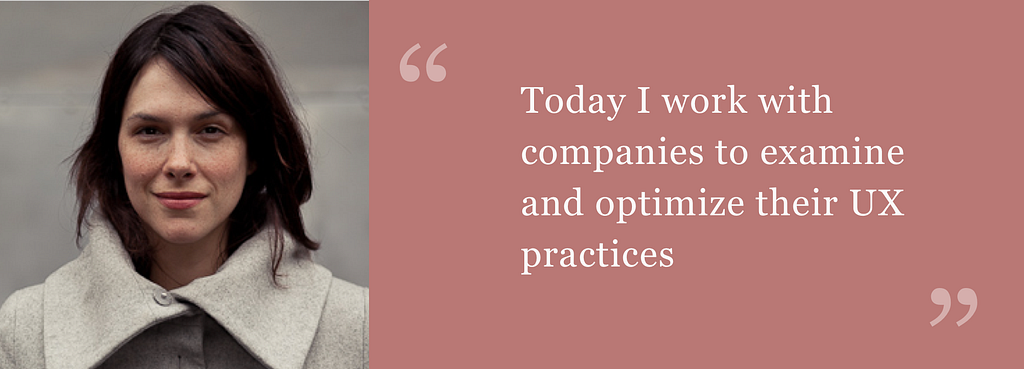
American 🇺🇸
Since going independent, I find I don’t have a typical work day. Some days I’m onsite with clients leading work sessions or facilitating workshops. Other days I’m out and about meeting fellow UX professionals for lunch or coffee to discuss the latest best practices in the field.
I may also be heads down on research or design from my home office. There’s always a steady stream of business development conversations — emails, phone calls and Skype sessions about challenges and potential projects people are dealing with in UX organisations.
For the kind of work I do, it’s a required habit to be always reading about what’s happening in UX — whether that’s case studies that are shared online, academic articles, or pieces in more traditional press with implications for how experience design is evolving.
I use Evernote to clip and organise all the things I find, filing them into notebooks with names like “case studies,” “stats,” “methods,” “seedlings,” and “talking points.”
All my notebooks are organised into one big stack I have optimistically labelled “the brain.”

American 🇺🇸
In general, I try to create a rhythm in my day between periods of focus and productivity and open space to relax and think. I’m not a full-time “hustle” kind of guy.
I’m useless when I try to exercise in the morning, so I save that for later. But lately, I have been taking cold showers to wake up and prime my state for the day.
I used to meditate daily (Headspace app) during my commute, but I’ve fallen out of practice now that I drive to work. I do miss the clarity and focus it brought to my day.
Lately, it’s a podcast in my car on the way to work. Sometimes design-specific, other times inspiring or entertaining. 99PI, Reply All, Hidden Braindesign , Design Details, WTF, Modern Maker, Startup — all great.
Other times I grab a cold brew coffee, shut off the podcast and think hard about a problem or idea that has been on my mind. When I get to work, right away I sketch/write to capture any ideas that popped up overnight or during my car ride.
Then, I plan my day using John Zeratsky’s “One Big Thing” method on a post-it, which I stick to the front of my notebook. I try to tackle my “Big Thing” before email or meetings.
I’ve found that’s when I’m at my best to make meaningful progress on a creative challenge.
OK real talk: I’ve learned that I usually have 1–2 garbage hours in the afternoon.
During this time I’m not motivated, creative or inspired unless I’m continuing a flow state from earlier in the day. For a long time, I would get discouraged when this time hit because it felt like there was something wrong with me — like I was just lazy — which only made it worse.
It’s been helpful to acknowledge this instead of fight it. If I’m on a deadline, I’ll heavily caffeinate and charge through mocks or light screen design (never a new or heavy creative task).
Most times I’ll just go for a walk, run an errand or grab coffee with a friend. Once that hour or so passes, I’m rejuvenated and can get back to doing good work. Oh, and get some sunshine.
hugg.in or I’m @bhuggins on Twitter and Instagram

Australian 🇦🇺
I spend most of my time between Hong Kong and Melbourne, working with clients across the Asia Pacific region. Every work day is different, depending on where I am and what my priorities are.
I start my work day between 9–9.30am with a round-up of emails, social media and reading articles.
I’ll have meetings lined up throughout the day and in between, I dedicate as much time as I can to supporting designers, non-designers, project teams, clients and the general public, stewarding the value of a design-led approach in all its forms — in particular, Experience Design.
Since moving back to APAC, I’m trying to uphold good workplace habits — leaving on time, making my health and well-being top priority, and enjoying life outside design.
When it comes to tools, they need to help me work smarter, not harder, and I like to keep it simple.
My calendar is my number 1 digital tool. I use email for official, long-hand, and WhatsApp, Skype, Messenger and Slack for short-hand. I use Linkedin in for professional networking and social sharing. Other digital tools, like Mural or Trello, can come in handy when working across geographies and with multidisciplinary teams.
And nothing beats the good old pen and paper — I love drawing to get my point across.
My Linkedin
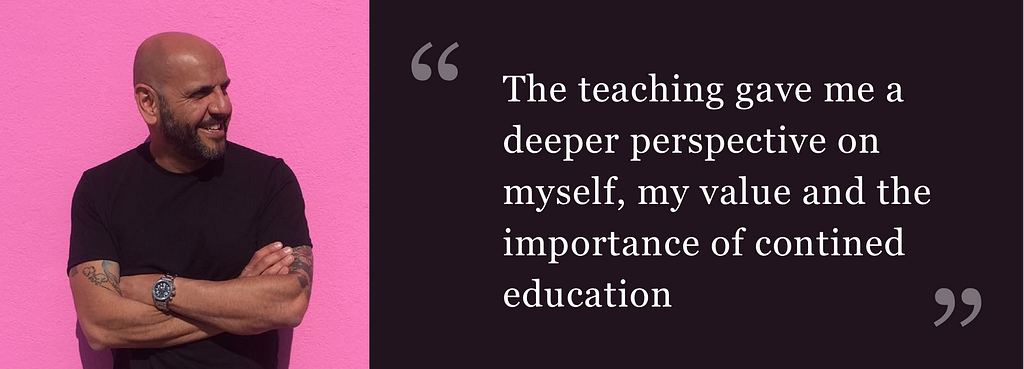
Australian 🇦🇺
My typical day starts with 5:30 am rise, tram to the gym (my first week back in two months!).
I’m trying to establish a routine to make my breakfast, get into the office where I have a good one hour solo time replying to emails and review my day ahead.
The team arrives between 8:30 and 9:00 so we do a quick standup to look at what we did yesterday and what we’re aiming for today.
It’s a great space for us to align and if someone’s experiencing any blockers to getting things done, we work together to clear them.
From there on, my day is a mixture of:
So my day is anything but typical. Just the way I love it!!
My Linkedin
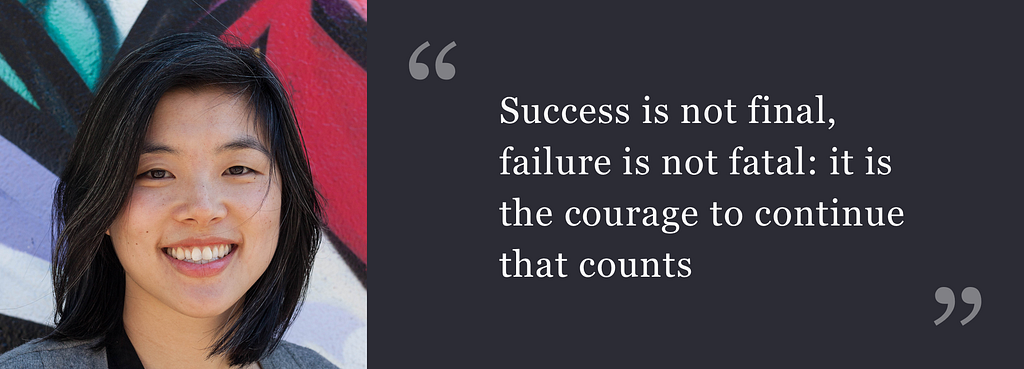
American 🇺🇸
My weeks tend to be split between several thematic areas:
I have two little ones at home now, so I tend to start my days on the earlier side at around 8:30 am and like to get into the office before things get into full swing.
I use the first bit of the day to scan my emails and respond to anything that needs an immediate response. All other emails can wait until later in the day.
The rest of my day consists of a mixture of meetings and work time. (I’m trying to be better about carving out more time to just work.)
Since having kids, I’ve made it a point to be home for dinner and bedtime routines at least three times a week, so on most days I leave the office by around 5:30.
On those nights, I’ll often log back on after the kids go to bed to finish up a few things from the day or get slightly ahead on tomorrow’s tasks. I allow myself 1–2 days to work late in the office.
Some tips that have been passed to me that are worth noting:
My Twitter
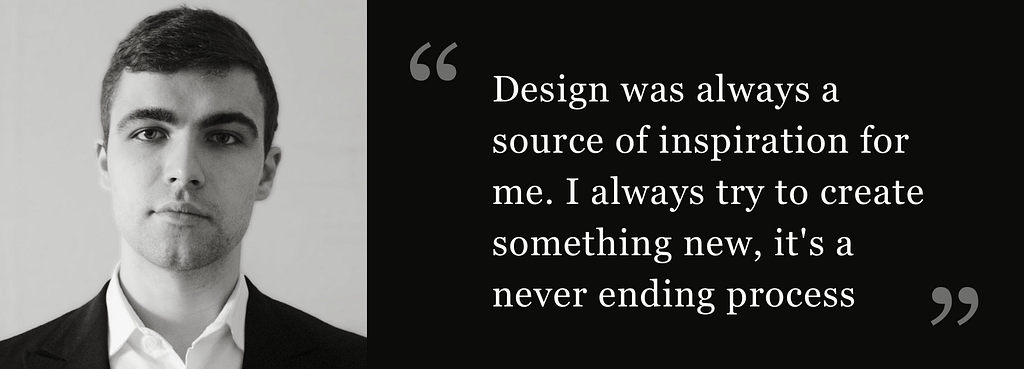
Russian 🇷🇺
My work day usually starts with meeting (daily sync-up meeting with my team). We discuss our progress (what was done yesterday, what we’re going to do today, and what showstoppers we have).
After that, I usually do a design review (spend an hour or two to provide feedback on design work).
I use Skype as a communication tool. I use Zeplin as a tool for by-screen review (I offer comments and suggestions there). JIRA and Trello are my favourite tools for task management

Nationality: Peruvian 🇵🇪
Regarding product work, depending on where I’m in the development process, my day can look very different.
If we’re in the planning stages, then I’m often communicating with team members and exchanging ideas. Planning can take the form of meetings, document writing, or sprints. It’s helpful to over-communicate and be very explicit during this stage. We mostly use Facebook Groups and Messenger threads to collaborate.
If we’re acquiring knowledge from the people that use our products, then I’m attending user research sessions or potentially travelling to conduct ethnographic studies.
Building empathy and hearing directly from people is extremely important and a not-to-be-missed step! If we’re heads-down building, then I’m most likely at my desk working on Sketch or prototyping on Framer.
I find it useful to block out time to have at least a couple of uninterrupted, consecutive hours of work. Throughout, I’m also collaborating with other designers ad-hoc or through critiques.
I’m also meeting with engineers to discuss implementation, with content strategists to go over designs, with user researchers to answer open questions, and with product specialists to gather their insights.
The more I show my work to people the more feedback I get and the better the resulting solution becomes.
Since Facebook is such a big organisation, as part of it all, I’m also often meeting with designers from other teams to assess whether there are opportunities for collaboration.
I often have many projects in varying stages, so it’s a combination of all the above.
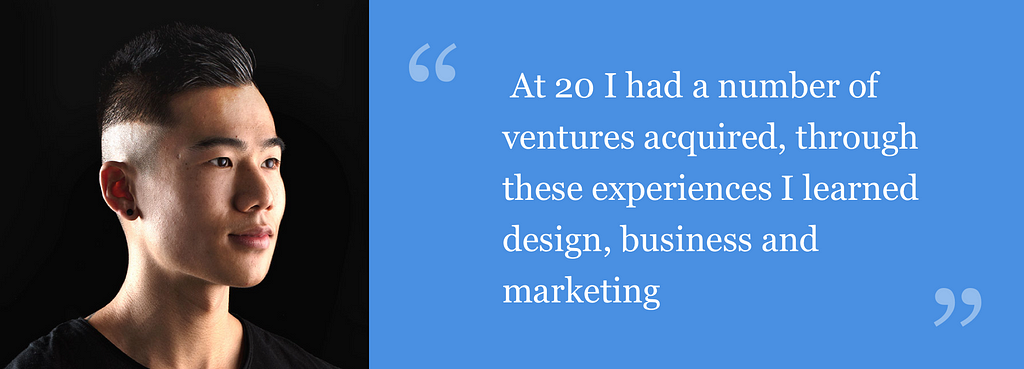
Australian 🇦🇺
As a founder, no day is the same for me as I work on various projects. I do however follow a general routine.
7.00 am — Wake up
7:30 am — Check emails and social media.
8:00 am — Prepare meals and pack for work.
9:00 am— Arrive at work, brew my cup of Green Tea. 🍵
9:15 am— Respond to social media and emails.
10:00 am — Catch up with my team; follow up on previous day’s work and set the tasks for the day.
10:30 am— Heads down! Juggle between The Designership, Artko Themes and Mizko Media client work. 🤹
1:00 pm— Lunch Break! Rest is important. 🍽
2:00 pm— Smash more work!
6:00 pm— Iron pumping time 🏋️
7:00 pm — Cook dinner, shower and catch up with flatmates.
11:00 pm — Beauty sleep time. 🛌
The above is a very highlevel view of my typical day. There are always things that pop up varying from client meetings to filming YouTube videos and more.

Canadian 🇨🇦
I’d like to say that my early morning yoga routine and green kale smoothies help, but seriously…..who the %&$@ am I kidding?
I’m mostly a night owl, so it’s a battle dragging my ass out of bed every morning, and then I spend the next 45 minutes trying to make it out of the house in time.
My morning routine is the only thing that’s predictable about my day. There is no such thing as a typical day in my world and I’m pretty happy about that.
Imagine a world where every day was typical? No thanks.
I’m not someone who could survive in a mundane work environment. How I stay productive in these unpredictable days feels like a subjective thing to me. In other words, what helps me to be more efficient might completely derail the next person.
And let’s be real — we’re not always machine 24/7. There are plenty of times where I’d much rather spend my time scouring Pinterest boards for DIY projects I’ never finish than sitting in meetings.
With this said, I am a strong advocate for coffee. And sticky notes. And anything that can be used to jot random ideas down because I don’t believe a single one should be lost.
But no matter what methods you employ to remain assiduous, keeping a healthy work/life balance is the most important. Being healthy both physically and mentally goes a long way for your productivity.
The challenge with this is we tend to be our own worst enemy. Passion and fastidiousness needs to be balanced with the understanding that you can leave it to another day without the world coming to an end.
Maintaining your sanity is a big one — trust me on this one.
My Linkedin

Italian 🇮🇹
My days are busy, and I don’t have many breaks. I guess many people are in the same situation.
My best time to think about a problem I’m trying to solve is by escaping from the office for a nice walk.
The only way I know how to be productive is to starting early in the morning and write down an old fashion to do list with lots of coffees.
I have learned to question meetings and say “no”.
At the end of the day no one will compliment you for your availability, they can be happy about it but what it counts is what you deliver.
My best tip is to say no. If you can’t say it just yet you may ask about the meeting agenda and discuss if an email could achieve the same results(it’s always the case).
My Linkedin
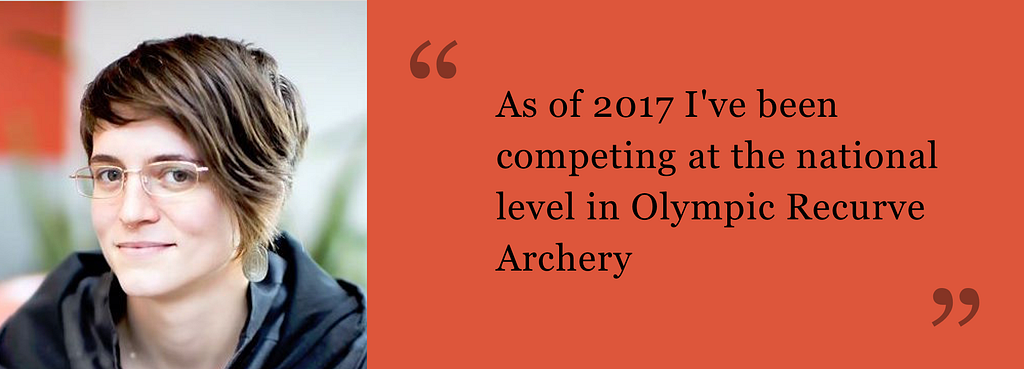
American 🇺🇸
As a consultant, typical is always changing.
And during the summer I’m a full-time competitive archer 🏹
In both cases, there’s little structure outside of due dates and tournament dates. So I find that my best productivity tool is creating structure.
I plan in scales of three months, one month and the coming week.
My today self is never as in tune with my larger goals as my past self, so I take advantage of that foresight. I leave a lot of buffer time, rarely scheduling more than four hours a day of stuff.
And I rarely schedule Fridays, if I can avoid it, as those are good days to play catch up or work on learning new skills.
When working with clients, it’s key to settle early on who’s managing the schedule and what are the important milestone dates.
It’s a lot easier to be creative when you know all the must do’s are going to be done.

British 🇬🇧 and recently Australian 🇦🇺
My workday starts at just before 6 am because the majority of my team is based on the East coast of the US. It’s an absurd time to start working, but I find the longer I do it, the more productive I feel.
There’s something extremely satisfying about having done three hours of work before anyone shows up to my co-working space!
That said, I don’t have much time for anything more than a quick shower and coffee, before driving to the office in the mornings. Not much of a routine!
To be productive, the first hour is dedicated to catching up on Slack, email and other admin bits, before getting stuck into design.
At the end of this hour I try to post what I hope to achieve with the day in our #designer-daily Slack channel — which holds me accountable to my own agenda.
To keep on top of my priorities, I use Things, which acts as “my brain” before I surface for coffee number two ☕️ ☕️ at 11am.
I aim to end each day with a video walkthrough of my latest design or prototype (I useloom.com). This gives me something to aim for, and is a great way for my team to see work in progress.
My work at buzzusborne.com, my Twitter, my writing on Medium and my resume on Linkedin

Australian 🇦🇺
I’ll start my day around 6 am by reading a few articles on my reading list and if I’m feeling particularly motivated, get a workout in before work.
On my commute to work, I’ll listen to a podcast until I get into the Humaan offices around 8:30 am. Then I’ll catch up on any emails before going through a mini-standup for that day.
My day can vary quite a bit. I could be working on a UI design, an illustration, a branding project or meeting with a client. It’s also not uncommon for me to be in constant communication with the developers who are building my designs.
During my lunch breaks, I’ll make sure I take time away from my desk to catch up with the team and give my eyes a screen break. Lately, I’ve also been trying to use half of my break for quick writing or design exercises.
After work I’ll try to fit in a quick workout session with some of the Humaan team. I’ll then spend my nights catching up on emails and social media.
I might work on side projects, the odd freelance job, writing or taking time to do something completely unrelated to what I do every day (currently I’m learning how to skateboard!) Before heading to bed much later than I should.
Things that keep me on top of my day?
My Twitter and also on my Dribbble for haphazardly timed insights into my work.

British 🇬🇧
I wake up as soon as I can, spend an hour or so looking through news sites from my Feedly.
If I come across cool stuff, I use raindrop.io to bookmark things that I like. With Raindrop, you can then create public RSS feeds from what you’ve bookmarked, so I then import those feeds into another RSS Reader — Inoreader.
I like Inoreader because it’s only $5 a month to get access to their impressive integration with IFTTT, from where you can do anything with the content bookmarked — such as scheduling social media posts with Buffer or even importing content to WordPress sites.
After that stuff, if I don’t have time to do a run, I’ll just blast out one of them HIIT sessions from youtube in twenty mins and probably forget to eat.
At 9/10am, I start work at Marvel, scheduling some social media stuff (based on what I’ve already looked at).
Then I use Trello to figure out what to do — maybe I’m writing something or looking at dev tools for the Marvel blog.
The work at Marvel is great as it’s what I’d be doing if I wasn’t working for the most part — so that keeps me interested until around 5 or 6 pm when I switch to side projects or go to Spanish class.
I work remotely too, so that makes doing quite a lot of stuff a bit easier as I don’t have to travel.
My Twitter

Taiwanese 🇹🇼
At Google, every day varies, it depends on the stage of the project.
In the earlier stage, I might spend most of my day researching, meaning reading and talking to people.
At the middle stage, I produce wireframes, mock-ups and prototypes. Put materials together in slide decks. Present ideas to stakeholders to get buy-ins.
At the later stage, I make sure the final design is production-ready, exporting assets and creating red lines for engineers.
If necessary, I also work with researchers to conduct survey or usability testings. I’ve never known that emails can unknowingly eat up so much time until I joined Google (my first large corporation job).
I learned a tip from a coworker that makes me 10x more efficient — set up the “filter” in Gmail to group incoming emails based on labels with custom conditions automatically.
In this way, I can first focus on “important” emails, usually ones that are projects-related, in my inbox before getting into other non-time-sensitive ones.
My Medium
Read the other articles in this series
Intro Article: Start here to get to know the designers
Question 1: How did you get into design?
Question 2: You’ve just read it
Question 3: Will be published week commencing 25th September 2017.
Clap 👏 👏 👏 if you enjoyed this article, so others can find it
Comment 💬 if you have a question you’d like to ask the designers
Follow me Guy Ligertwood to read all the articles in the series
Question 2: How’s Your Typical Work Day? was originally published in UX Planet on Medium, where people are continuing the conversation by highlighting and responding to this story.
AI-driven updates, curated by humans and hand-edited for the Prototypr community